Deputy May 7, 1899 Name Apolinario Mabini | Preceded by Position established Preceded by Position established | |
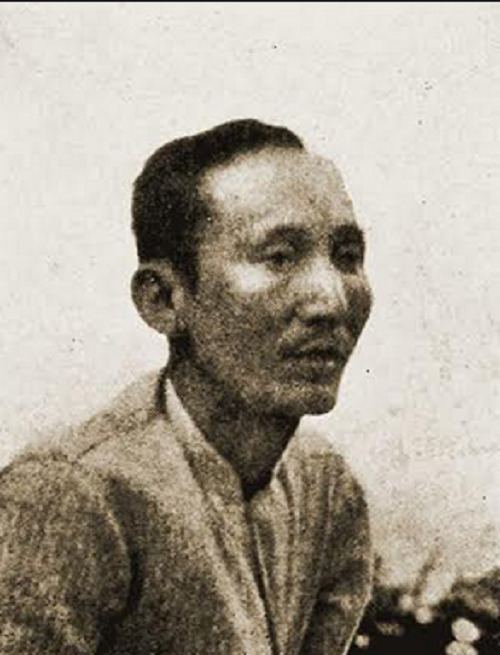 | ||
Full Name Apolinario Mabini y Maranan Alma mater San Juan de Letran CollegeUniversity of Santo Tomas Siblings Alejandro Mabini, Prudencio Mabini Parents Dionisia Maranan, Inocencio Mabini Similar People Emilio Aguinaldo, Andres Bonifacio, Antonio Luna, Emilio Jacinto, Jose Rizal | ||
28th Awarding Ceremonies of the Apolinario Mabini Awards (Speech) 9/29/2015
Apolinario Mabini y Maranan (July 23, 1864 - May 13, 1903) was a Filipino revolutionary leader, educator, lawyer, and statesman who served first as a legal and constitutional adviser to the Revolutionary Government, and then as the first Prime Minister of the Philippines upon the establishment of the First Philippine Republic.
Contents
- 28th Awarding Ceremonies of the Apolinario Mabini Awards Speech 9292015
- Apolinario mabini
- Early life and education
- Law Studies
- Masonry and La Liga Filipina
- Polio and eventual paralysis
- 1896 Revolution and Arrest
- Adviser to the Revolutionary Government
- Prime Minister of the Philippines
- Philippine American War exile and return
- Death
- Historical Remembrance
- Brains of the Revolution
- Sublime Paralytic
- Controversy about Mabinis paralysis
- Shrines
- Place names
- Naval Vessels
- Philippine Peso
- Government Awards and Citations
- Portrayal in Media
- Selected works
- From Mabini
- About Mabini
- References

Two of his works, El Verdadero Decalogo (The True Decalogue, June 24, 1898), and Programa Constitucional dela Republica Filipina (The Constitutional Program of the Philippine Republic, 1898) became instrumental in the drafting of what would eventually be known as the Malolos Constitution.

Mabini performed all his revolutionary and governmental activities despite having lost the use of both his legs to Polio shortly before the Philippine Revolution of 1896.
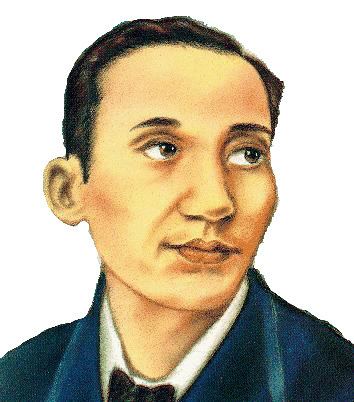
Mabini's role in Philippine history saw him confronting first Spanish Colonial Rule in the opening days of the Philippine Revolution, and then American colonial rule in the days of the Philippine–American War. The latter saw Mabini captured and exiled to Guam by American colonial authorities, allowed to return only two months before his eventual death in May, 1903.
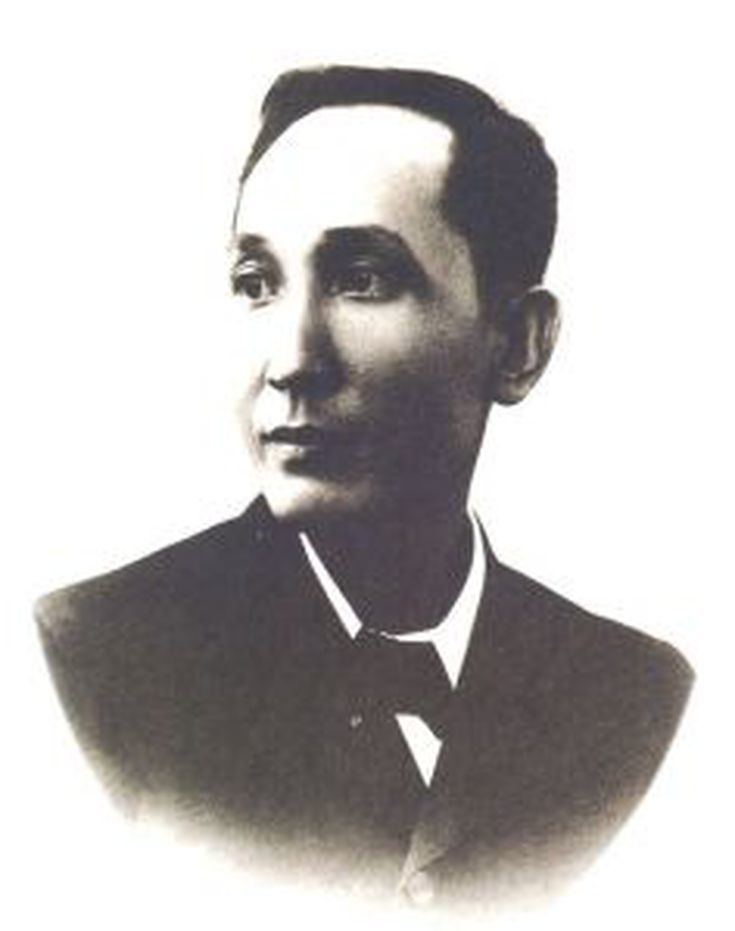
Apolinario mabini
Early life and education
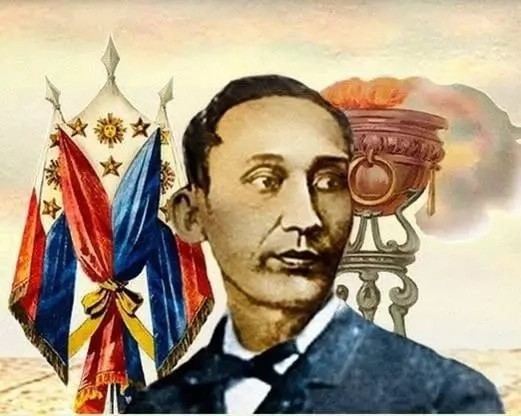
Mabini was born on July 23, 1864 in Barangay Talaga in Tanauan, Batangas. He was the second of eight children of Dionisia Maranan, a vendor in the Tanauan market, and Inocencio Mabini, an unlettered peasant.
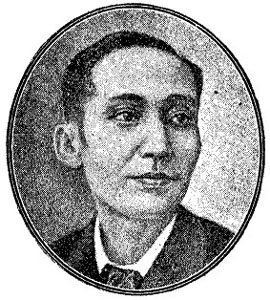
Mabini began informal studies under the guidance of his mother, as well as Maestro Agustin Santiesteban III, his Mentor from Davao. Because he demonstrated uncommon intelligence, he was transferred to a regular school owned by Simplicio Avelino, where he worked as a houseboy, and also took odd jobs from a local tailor - all in exchange for free board and lodging. He later transferred to a school conducted by the Fray Valerio Malabanan, whose fame as an educator merited a mention in José Rizal's novel El Filibusterismo.
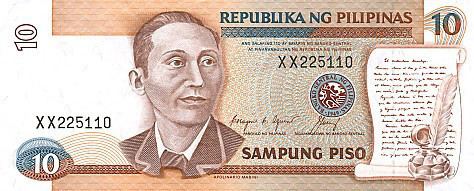
In 1881 Mabini received a scholarship to go to the Colegio de San Juan de Letran in Manila. An anecdote about his stay there says that a professor there decided to pick on him because his shabby clothing clearly showed he was poor. Mabini amazed the professor by answering a series of very difficult questions with ease. His studies at Letran were periodically interrupted by a chronic lack of funds, and he earned money for his board and lodging by teaching children.
Law Studies
Mabini's mother had wanted him to enter the priesthood, but his desire to defend the poor made him decide to study law instead. A year after receiving his Bachilles en Artes with highest honors and the title Professor of Latin from Letran, he moved on to the University of Santo Tomas, where he received his law degree in 1894.
Comparing Mabini's generation of Filipino intellectuals to the previous one of Jose Rizal and the other members of the propagandista movement, Journalist and National Artist of the Philippines for Literature Nick Joaquin describes Mabini's generation as the next iteration in the evolution of Filipino intellectual development:
Europe had been a necessary catalyst for the generation of Rizal. By the time of Mabini, the Filipino intellectual had advanced beyond the need for enlightenment abroad[....] The very point of Mabini’s accomplishment is that all his schooling, all his training, was done right here in his own country. The argument of Rizal’s generation was that Filipinos were not yet ready for self-government because they had too little education and could not aspire for more in their own country. The evidence of Mabini’s generation was that it could handle the affairs of government with only the education it had acquired locally. It no longer needed Europe; it had imbibed all it needed of Europe.Mabini joined the Guild of Lawyers after graduation, but he did not choose to practice law in a professional capacity. He did not set up his own law office, and instead continued to work in the office of a notary public.
Instead, Mabini put his knowledge of law to much use during the days of the Philippine Revolution and the Filipino-American war. Joaquin notes that all his contributions to Philippine history somehow involved the law:
"His was a legal mind. He was interested in law as an idea, as an ideal[...] whenever he appears in our history he is arguing a question of legality."Masonry and La Liga Filipina
Mabini joined the fraternity of Freemasonry in September 1892, affiliating with lodge Balagtas, and taking on the name "Katabay".
The following year, 1893, Mabini became a member of La Liga Filipina, which was being resuscitated after the arrest of its founder José Rizal in 1892. Mabini was made secretary of its new Supreme Council. This was Mabini's first time to join an explicitly patriotic organization.
Mabini, whose advocacies favored the reformist movement, pushed for the organization to continue its goals of supporting La Solidaridad and the reforms it advocated. When more revolutionary members of the Liga indicated that they did not think the reform movement was getting results and wanted to more openly support revolution, La Liga Filipina split into two factions:the moderate Cuerpo de Compromisarios, which wanted simply to continue to support the revolution, and the explicitly revolutionary Katipunan.
Mabini joined the Cuerpo de Compromisarios.
When José Rizal, part of the "La Liga Filipina", was executed in December that year, however, he changed his mind and gave the revolution his wholehearted support.
Polio and eventual paralysis
Mabini was struck by polio in 1895, and the disease gradually incapacitated him until January 1896, when he finally lost the use of both his legs.
1896 Revolution and Arrest
When the plans of the Katipunan were discovered by Spanish authorities, and the first active phase of the 1896 Philippine Revolution began in earnest, Mabini, still ill, was arrested along with numerous other members of La Liga Filipina.
Thirteen patriots arrested in Cavite were tried and eventually executed, earning them the title of "Thirteen Martyrs of Cavite". Jose Rizal himself was accused of being party to the revolution, and would eventually be executed in December that year.
When the Spanish authorities saw that Mabini was paralyzed, however, they decided to release him.
Adviser to the Revolutionary Government
Sent to the hospital after his arrest, Mabini remained in ill health for a considerable time. He was seeking the curative properties of the hot springs in Los Baños, Laguna in 1898 when Emilio Aguinaldo sent for him, asking him to serve as advisor to the revolution.
During this convalescent period, Mabini wrote the pamphlets "El Verdadero Decálogo" and "Ordenanzas de la Revolución." Aguinaldo was impressed by these works and by Mabini's role as a leading figure in La Liga Filipina, and made arrangements for Mabini to be brought from Los Baños to Kawit, Cavite. It took hundreds of men taking turns carrying his hammock to portage Mabini to Kawit.
He continued to serve as the chief adviser for General Aguinaldo after the Philippine Declaration of Independence on June 12. He drafted decrees and edited the constitution for the First Philippine Republic, including the framework of the revolutionary government which was implemented in Malolos in 1899.
Prime Minister of the Philippines
Apolinario Mabini was appointed Prime Minister and was also Foreign Minister of the newly independent dictatorial government of Aguinaldo on January 2, 1899. Eventually, the government declared the first Philippine republic in appropriate ceremonies on January 23, 1899. Mabini then led the first cabinet of the republic.
Mabini found himself in the center of the most critical period in the new country's history, grappling with problems until then unimagined. Most notable of these were his negotiations with Americans, which began on March 6, 1899. The United States and the Philippine Republic were embroiled in extremely contentious and eventually violent confrontations. During the negotiations for peace, Americans proffered Mabini autonomy for Aguinaldo's new government, but the talks failed because Mabini’s conditions included a ceasefire, which was rejected. Mabini negotiated once again, seeking for an armistice instead, but the talks failed yet again. Eventually, feeling that the Americans were not negotiating 'bona fide,' he forswore the Americans and supported war. He resigned from government on May 7, 1899.
Philippine American War, exile, and return
The Philippine–American War saw Mabini taken more seriously as a threat by the Americans than he was under the Spanish: Says National Artist for Literature F. Sionil Jose:
"The Spaniards underestimated Mabini primarily because he was a cripple. Had they known of his intellectual perspicacity, they would have killed him earlier. The Americans did not. They were aware of his superior intelligence, his tenacity when he faced them in negotiations for autonomy and ceasefire."On December 10, 1899, he was captured by Americans at Cuyapo, Nueva Ecija, but granted leave to meet with W.H. Taft. In 1901, he was exiled to Guam, along with scores of revolutionists Americans referred to as 'insurrectos' and who refused to swear fealty to imperialist America. When Brig. Gen. Arthur C. MacArthur, Jr. was asked to explain by the US Senate why Mabini had to be deported, he cabled:
Mabini returned home to the Philippines in Feb. 1903 after agreeing to take the Oath of Allegiance to the United States on February 26, 1903 before the Collector of Customs. On the day he sailed, he issued this statement to the press:
To the chagrin of the American colonial officials, however, Mabini resumed his work of agitating for independence for the Philippines soon after he was back home from exile.
Death
Not long after his return, Mabini died of cholera in Manila on May 13, 1903 at the age of 38.
Historical Remembrance
Mabini's complex contributions to Philippine History are often distilled into two historical monikers - "Brains of the Revolution", and "Sublime Paralytic." Contemporary historians such as Ambeth Ocampo point out, though, that these two monikers are reductionist and simplistic, and "do not do justice to the hero’s life and legacy."
"Brains of the Revolution"
Because of his role as advisor during the formation of the revolutionary government, and his contributions as statesman thereafter, Mabini is often referred to as the "Brains of the Revolution", a historical moniker he sometimes shares with Emilio Jacinto, who served in a similar capacity for the earlier revolutionary movement, the Katipunan.
"Sublime Paralytic"
Mabini is also famous for having achieved all this despite having lost the use of his legs to Polio just prior to the Philippine revolution. This has made Mabini one of the Philippines' most visually iconic national heroes, such that he is often referred to as "The Sublime Paralytic" (Tagalog:"Dakilang Lumpo"). Contemporary historians, however, point out that the title obscures Mabini's many achievements.
Controversy about Mabini's paralysis
Even during his lifetime, there were controversial rumors regarding the cause of Mabini's paralysis. Infighting among members of the Malolos congress led to the spread of rumors that Mabini's paralysis had been caused by venereal disease - specifically, syphilis. This was finally debunked in 1980, when Mabini's bones were exhumed and the autopsy proved conclusively that the cause of his paralysis was Polio.
This information reached National Artist F. Sionil José too late, however. By the time the historian Ambeth Ocampo told him about the autopsy results, he had already published Po-on, the first novel of his Rosales Saga. That novel contained plot points based on the premise that Mabini had indeed become a paralytic due to syphilis.
In later editions of the book, the novelist corrected the error and issued an apology, which reads in part:
In the later editions, Mabini's disease - an important plot point - was changed to an undefined liver ailment. The ailing Mabini takes pride in the fact that his symptoms are definitely not those of syphilis, despite the rumors spread by his detractors in the Philippine Revolutionary government.
